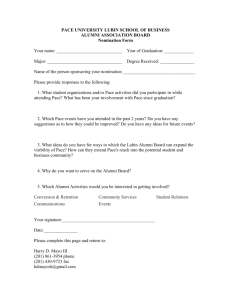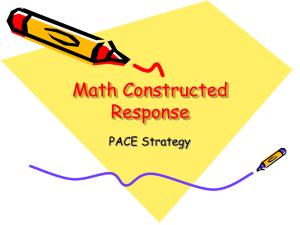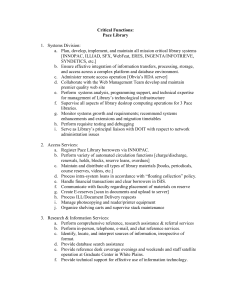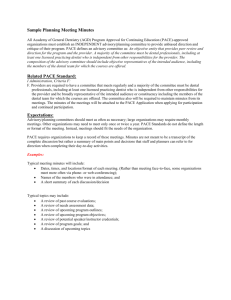Participatory Action for Community Enhancement (PACE)
advertisement
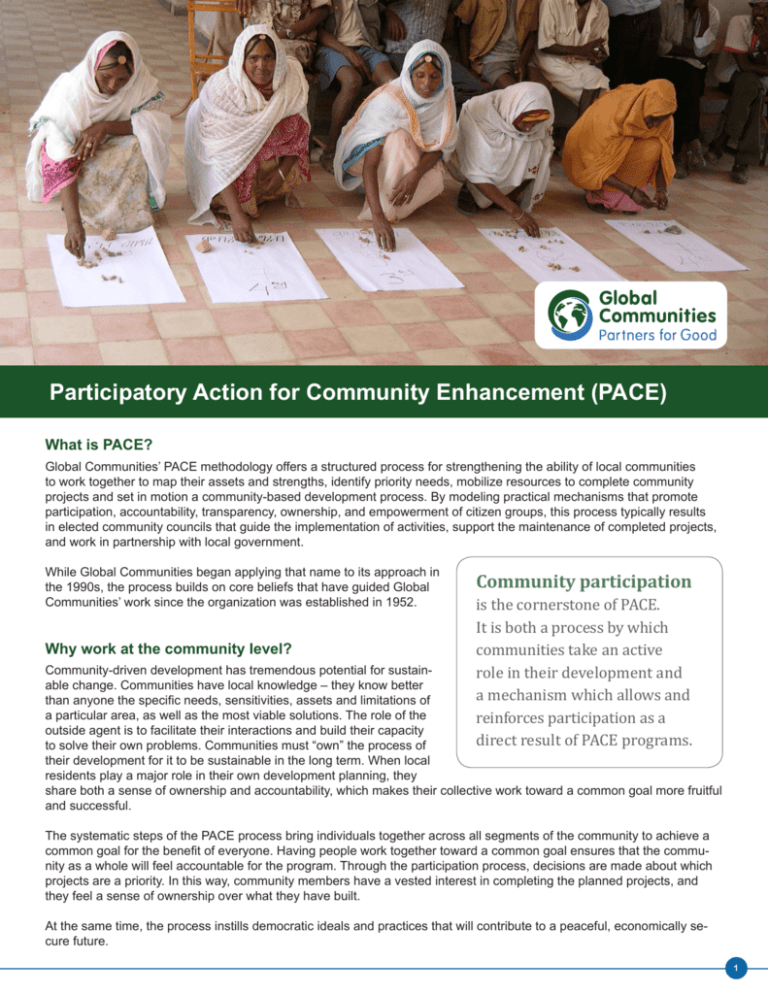
Participatory Action for Community Enhancement (PACE) What is PACE? Global Communities’ PACE methodology offers a structured process for strengthening the ability of local communities to work together to map their assets and strengths, identify priority needs, mobilize resources to complete community projects and set in motion a community-based development process. By modeling practical mechanisms that promote participation, accountability, transparency, ownership, and empowerment of citizen groups, this process typically results in elected community councils that guide the implementation of activities, support the maintenance of completed projects, and work in partnership with local government. While Global Communities began applying that name to its approach in the 1990s, the process builds on core beliefs that have guided Global Communities’ work since the organization was established in 1952. Why work at the community level? Community participation is the cornerstone of PACE. It is both a process by which communities take an active role in their development and a mechanism which allows and reinforces participation as a direct result of PACE programs. Community-driven development has tremendous potential for sustainable change. Communities have local knowledge – they know better than anyone the specific needs, sensitivities, assets and limitations of a particular area, as well as the most viable solutions. The role of the outside agent is to facilitate their interactions and build their capacity to solve their own problems. Communities must “own” the process of their development for it to be sustainable in the long term. When local residents play a major role in their own development planning, they share both a sense of ownership and accountability, which makes their collective work toward a common goal more fruitful and successful. The systematic steps of the PACE process bring individuals together across all segments of the community to achieve a common goal for the benefit of everyone. Having people work together toward a common goal ensures that the community as a whole will feel accountable for the program. Through the participation process, decisions are made about which projects are a priority. In this way, community members have a vested interest in completing the planned projects, and they feel a sense of ownership over what they have built. At the same time, the process instills democratic ideals and practices that will contribute to a peaceful, economically secure future. 1 PACE STAGES AND CYCLES DURING LIFE OF PROGRAM Stage 1: Setting the Foundation Develop community leaders Engage Community Stage 2: Taking Action YEAR 1 2. Mobilize Resources REPEAT IN YEAR 2 • PACE programs result in tangible improvements in living standards and build the capacity for self-reliance of communities. • PACE promotes cooperation between individuals and communities to provide stability for communities to actively pursue their developmental goals. • PACE promotes awareness among communities that they are part of a greater community and therefore can influence decision-making processes that impact their lives. Community Action Planning Stage 3:Taking Ownership & Sustaining Action 1. Develop Community Projects 4. Oversee projects and inform stakeholders Mapping/ Prioritize Needs What are the benefits of PACE? REPEAT IN YEAR 3 3. Execute Community Projects In Honduras, Global Communities’ PACE methodology enabled local residents to work together to map their assets and strengths, identify priority needs, and mobilize resources to complete an irrigation and water harvesting system. In Iraq, the PACE process helped bring together members of different communities to solve their problems, improving the relationship between two sparring villages, easing the sectarian tensions and enabling the residents to complete a successful water project together. 2 In Colombia, PACE is at the core of the ANDA (“Go Forward”) program. PACE is used to bring residents together who have suffered from violence and displacement, helping them establish a common vision for their communities and create the road map to get there. In Nicaragua, the Local Governance Program is using PACE to mobilize residents into Municipal Development Committees. The MDC members are given the training and skills they need to articulate their communities’ priorities and act on behalf of their communities to keep local governments transparent and accountable. FORMERLY Founded in 1952, Global Communities (formerly CHF International) currently operates in over 20 countries and territories. Our mission is to create long-lasting, positive and community-led change that improves the lives and livelihoods of vulnerable people across the globe. Development is not something we do for people; it is something we do with them. We believe that the people who understand their needs best are the people of the community itself. For more information, please visit our website at: www.globalcommunities.org 3


